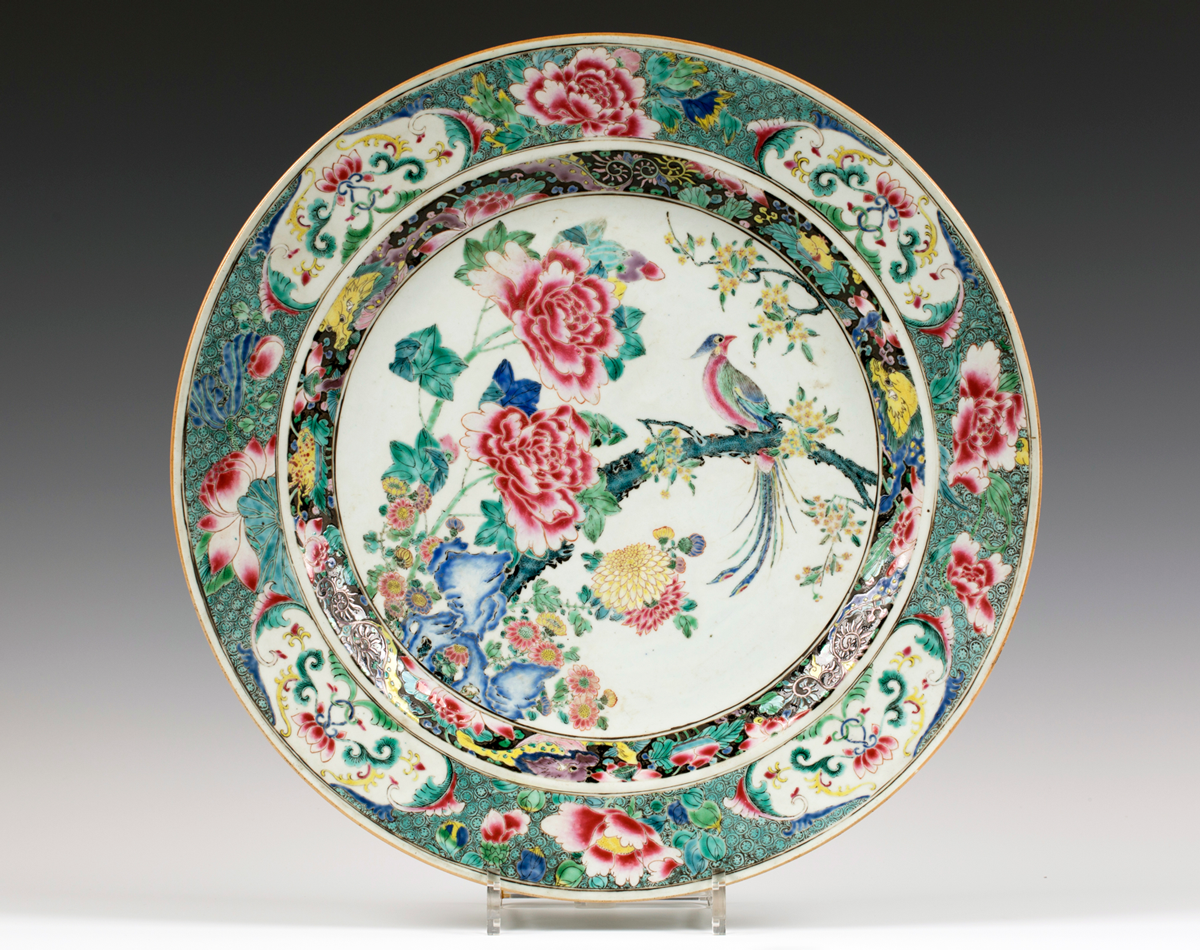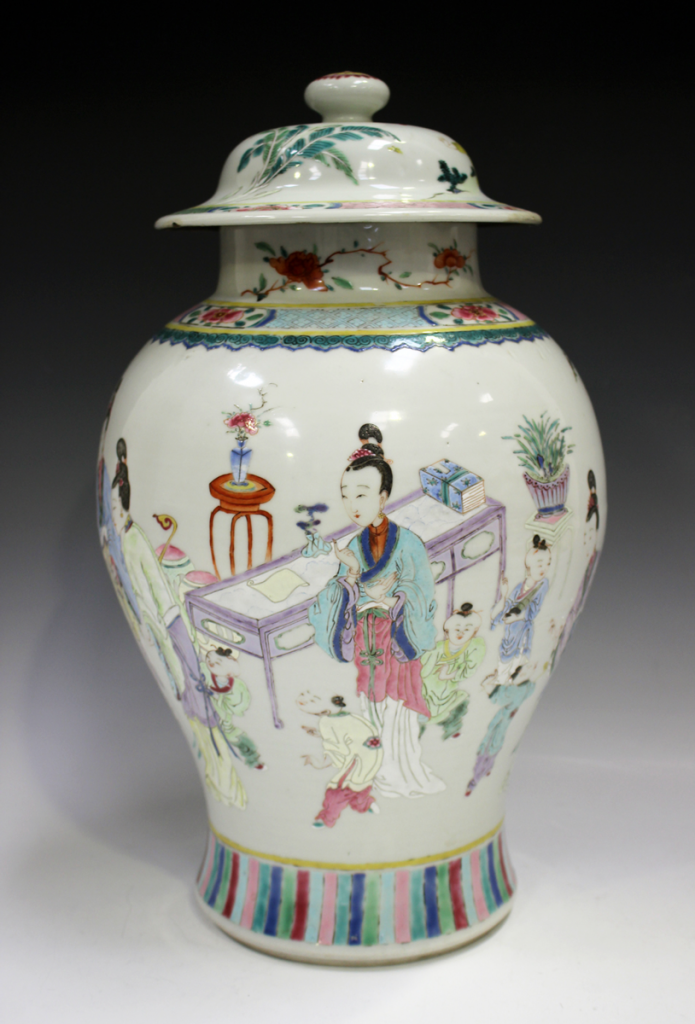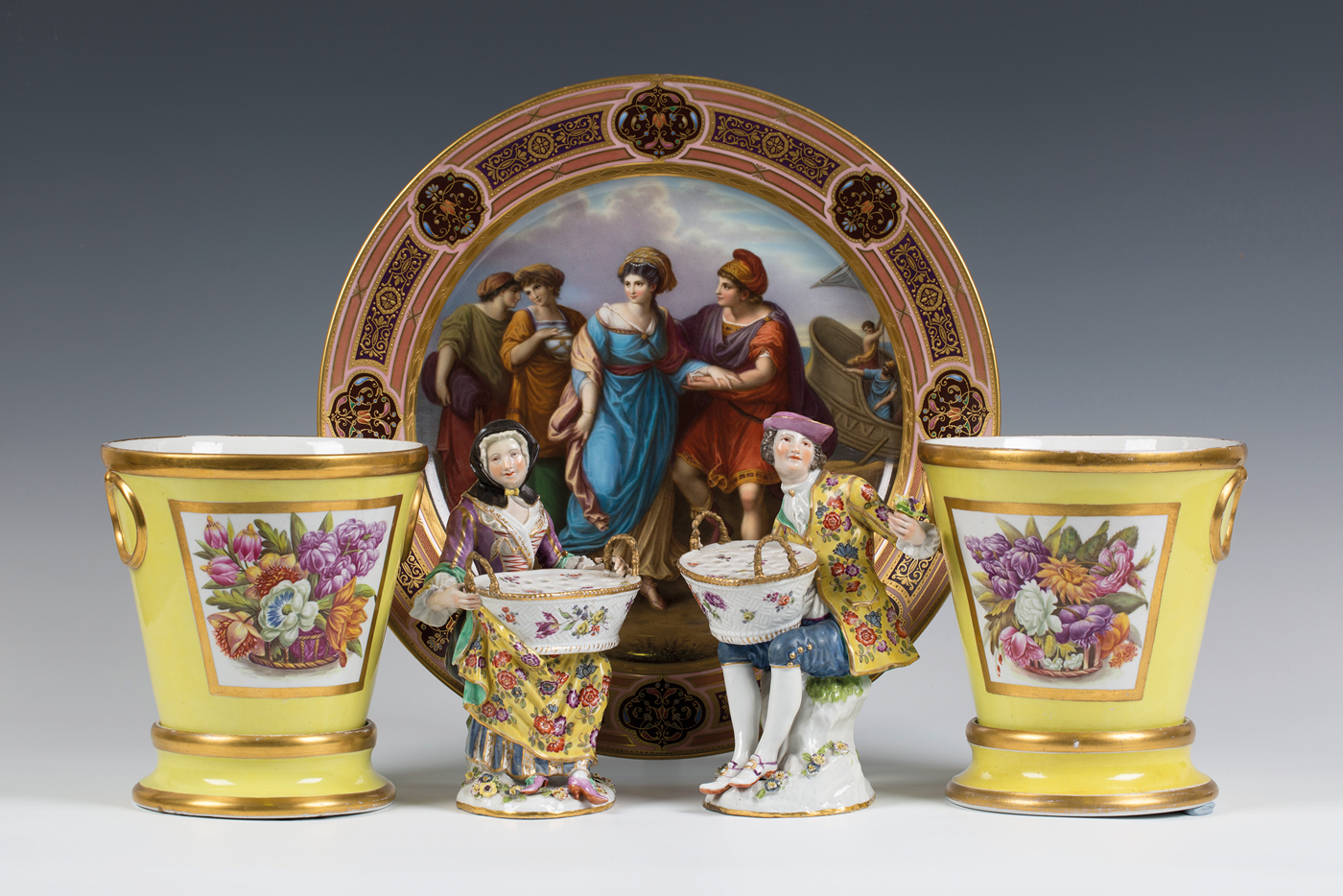
The Yongzheng Emperor (1678-1735) reigned over China between 1723 and 1735. He restored a functional imperial court and good government based around Confucian principles rooting out corruption.
He encouraged the development of the arts in China. He was particularly interested in the imperial porcelain factory at Jingdezhen where he appointed Tang Ying (1682–1756) as director in 1728.
The Yongzheng period would see the production of some of the world’s most delicate porcelain and enamelled painting with the Emperor choosing artists and providing commentary on their work.
During this period exports of famille verte porcelain were overtaken by the famille rose palette.
Yongzheng porcelain is of the very highest quality and its brilliance remained unsurpassed in later periods. These pieces are often superbly decorated with harmonious scenes of birds in branches, long-tailed pheasants, flowering plants and fruiting branches like the £4,500 famille rose charger.

Family scenes with children and adults are also typical of the Yongzheng period. The restored vase and cover with its beautifully conceived baluster body is decorated with a scene of a boy lighting a firecracker as a group of twelve other boys and four maidens watch on. One of the boys puts his hands to his ears. It sold at Toovey’s for £10,000. Like a scroll painting the scene reveals itself as you turn the vase.
The clear white porcelain made an ideal surface for the fine painting you see on these two examples. The decoration is more restrained and less crowded than later pieces which sought to answer Western tastes for richer designs.
Whilst famille verte pieces continued to be decorated where they were manufactured famille rose pieces were often decorated and re-fired in muffle kilns at places like Canton where Western companies established trading posts.
This technical excellence and style is explained by the production processes refined by Tang Ying at Jingdezhen. Tang Ting was the foremost ceramic expert in China. He was summoned to Beijing in 1743 to illustrate and catalogue the imperial collection and described the process of porcelain manufacture in twenty steps. This led to an elaborate division of labour at the imperial kilns so that no one person was responsible for the production of a single piece at Jingdezhen.
The Chinese market continues to rise as European and Chinese collectors remain as passionate in their collecting as their imperial forebears and the market shows no signs of abating. If you would like advice on your Chinese objects Toovey’s Chinese specialist, Tom Rowsell, can be contacted on 01903 891955 or by emailing auctions@tooveys.com.
